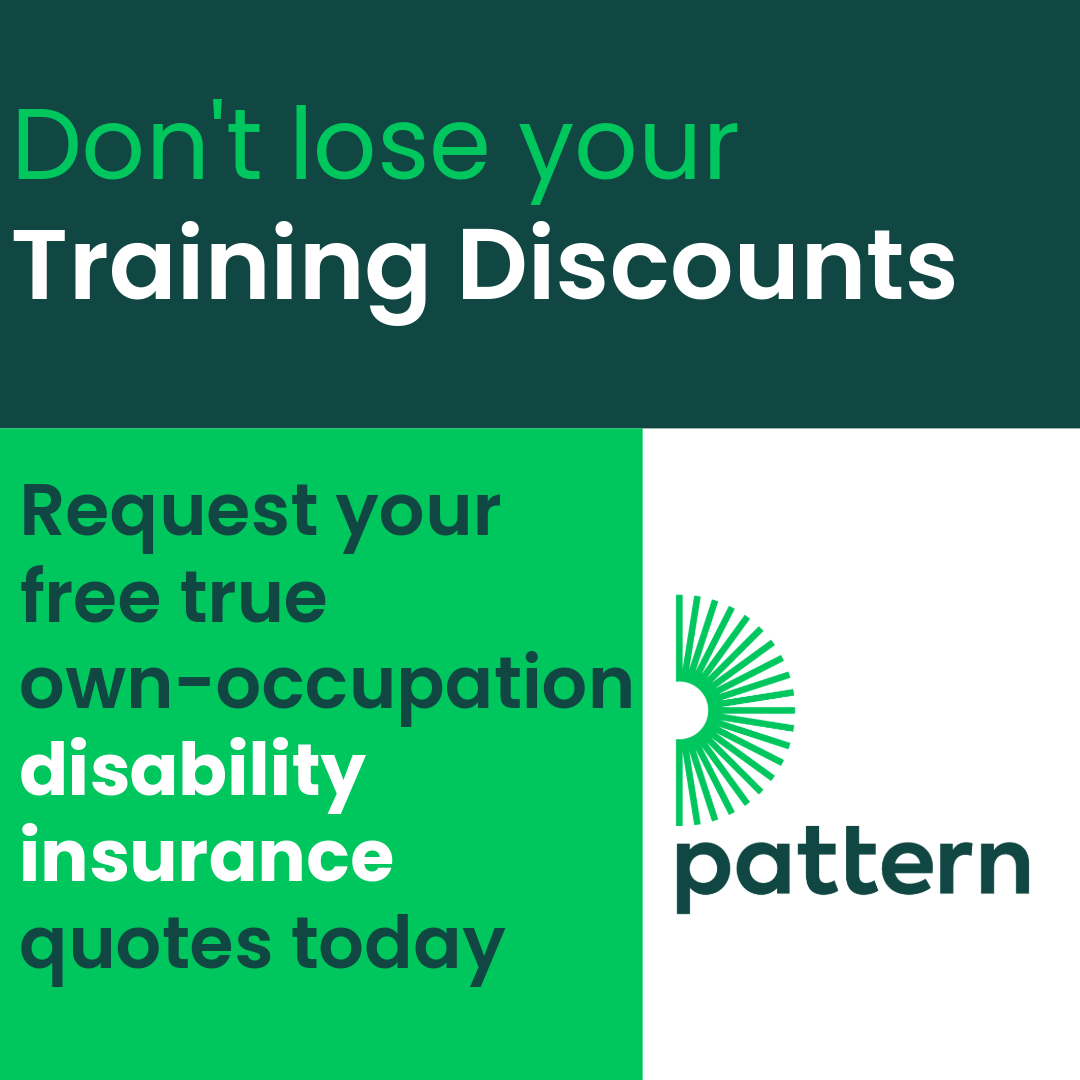Healthcare workers are no strangers to stress. From navigating constant system changes to the emotional demands of patient care, burnout can feel inevitable—but it doesn’t have to be. In this post, Licensed Marriage and Family Therapist Mari Verano offers four practical tips to help you not only survive but thrive in the demanding world of healthcare. Explore how you can protect your well-being while continuing to provide exceptional care to others!
Tip 1: Create Calm
When was the last time that someone told you to “calm down” when you were feeling stressed out? You probably were thinking, “They have no idea what I’m going through as a healthcare provider!” I have no time to be calm! The system keeps changing and every day, I’m met with a new thing that stresses me out that I’ve never seen before in my life!”
Part of that is true. The system does keep changing, from EHRs to best practices. Furthermore, there is no way you can prepare for every clinical scenario that you encounter. Here’s the good news: You do have time to be calm, no matter how busy and unpredictable your schedule gets. You can teach your brain and body to feel calm in a way that works for you, no matter what happens.
What Is Calm?
Feeling calm means accessing the stimuli that have historically made you feel calm. This is highly individualized to each person’s preferences history. One person might feel calm looking at a picture of their dog; another person might have a fear of dogs.
The Science of Calm
- A study by Siritunga, et. al. demonstrated a “statistically significant reduction” of blood pressure, pulse rate, and respiratory rate after listening to Indian classical music “for about 22 minutes” (Siritunga et al, 2013).
- A Japanese study demonstrated that a combination of stretching and “conscious slower breathing” lowered cortisol levels in adult women (Sakurai et al, 2024).
One-Minute Ways to Create Calm
Even during a hectic workday, there are quick, simple ways to cultivate a sense of calm in just a minute or two:
- Identify a piece of music that has historically made you feel calm. Listen to it during breaks at work.
- Take deep breaths out for ten seconds during a one-minute break.
- Identify videos or pictures that make you feel calm. Put them into a folder on your phone that you can easily access while you are on the floor.
Burnout isn’t Inevitable
Neuroplasticity is the ability for the brain to change over time. Practice the skills that lead to calm; become calm. As a healthcare worker, you will always have control over the systems and practices you create for self-care. Self-care isn’t selfish – it will help you serve more patients for longer periods of time.
Want a customized burnout prevention plan? Book a session with me.
SOURCES:
- Siritunga, S. , Wijewardena, K. , Ekanayaka, R. and Mudunkotuwa, P. (2013) Effect of music on blood pressure, pulse rate and respiratory rate of asymptomatic individuals: A randomized controlled trial. Health, 5, 59-64. doi: 10.4236/health.2013.54A008.
- Sakurai, M. , Ikarashi, Y. , Tabuchi, M. , Hu, A. , Yamaguchi, T. and Kobayashi, H. (2024) Static Stretching Combined with Conscious Slower Breathing May Increase Parasympathetic Activity and Reduce Stress in Adult Women. Health, 16, 242-256. doi: 10.4236/health.2024.163020.
Tip 2: Create Adventure
Leadership changes. Policy changes. Implications for the state of practice and for the state of healthcare change, as well. However, when clinicians find a sense of adventure, they find hope, possibility, and resilience.
What Is Adventure?
Feeling a sense of adventure means accessing the stimuli that have historically made you feel adventurous. This is highly individualized to each person’s preferences and history. For one clinician, adventure might be trying a different restaurant in their neighborhood every week. Another clinician might find this too stressful because they’re on a special diet, so they prefer to go rock climbing instead. A good question to ask yourself is, “What gets me out of my comfort zone just enough but doesn’t stress me out too much?”
The Impact of Adventure
In addition to the potential for fun, engaging in new experiences can improve our cognitive abilities. Research supports the idea that trying diverse activities helps us become more adaptable and better at problem-solving. A 2021 study in The Journals of Gerontology emphasizes this point, stating,
“Participating in a variety of daily activities (i.e., activity diversity) requires people to adjust to a variety of situations and engage in a greater diversity of behaviors. These experiences may, in turn, enhance cognitive functioning.”
Cognitive functioning includes the ability to problem-solve in new and scary scenarios. You will never be able to prepare for everything you encounter as a clinician, but you can develop the ability to think on your feet and adapt. Engaging in activities that put you slightly out of your comfort zone on a regular basis can help you practice this in an enjoyable way.
Small Ways to Create Adventure
Here are some quick and easy ways to spark a sense of adventure and excitement in just a minute or two:
- Listen to a piece of music that you’re unfamiliar with.
- Take a minute to plan your next trip or adventure—whatever that looks and feels like for you.
Tip 3: Create Pleasure
As a healthcare professional, pleasure can feel impossible after working with people in pain all day in a system with increasing responsibilities. Learning to access pleasure involves remembering you are more than your job, as well as learning stress management skills you can use immediately after difficult moments at work.
What Is Pleasure?
What is pleasurable is highly individualized to one’s memory and experiences. Try to identify your individual pleasure triggers and incorporate pleasurable stimuli throughout the work day. Through doing so, you can learn to navigate a healthcare system with conflicting, unreasonable demands and commit to staying in the field for longer.
The Impact of Pleasure
Pleasurable sensory experiences—such as pleasant odors, soothing sounds, calming visuals, and touch—can effectively reduce stress and lower cortisol levels. Research shows that engaging with positive stimuli activates the brain’s relaxation pathways, helping to lower cortisol and promote a sense of calm. For instance, stimuli like calming music and nature images have been shown to reduce physical markers of stress. Even touch, such as massage, can trigger the release of oxytocin and ease stress.
Small Ways to Create Pleasure
This exercise takes no more than ten minutes to complete:
- Open a digital document on your computer or cell phone.
- Write down each of the five senses: sight, sound, taste, touch, and smell.
- Take one minute to answer the question, “What sights have historically brought me pleasure?”
- Repeat this exercise for the next four words (sound, taste, touch, and smell).
- After you are done brainstorming for each category, ask yourself, “Which of these stimuli would I be able to bring to work?”
- For physical stimuli, put these in a small pouch that you can easily access at work.
- For digital stimuli (such as audio recordings) put these in a place that you can easily access on your electronic device.
Examples of stimuli to consider include scents that remind you of happy times in your life and playlists with sounds that induce relaxation.
Tip 4: Create Excitement
Burnout isn’t always caused by too much stress– too little stress can also lead someone to lose motivation. In my therapy practice, I have seen talented clinicians burn out due to boredom and the lack of control that they have over adding more variety and challenge to their work.
What Is Excitement?
I define excitement as the opposite of boredom, where a clinician feels engaged and energized by their job. What’s engaging and energizing is highly individualized to someone’s personality, preferences, and history. I ask my burned-out therapy clients, “When was the last time you felt excited?” Their answer holds clues to the following:
-
A job that is a better fit for their personality.
-
Strategies to feel more engaged at work.
-
The activities that will motivate them–outside of work–to stay at their current job.
Individual factors are always more within your control. Better to create a stress management plan instead of waiting for your workplace to change.
Excitement’s Role in Preventing Burnout
A study out of the journal Creative Education “suggests that improv [theater] can help psychiatry residents overcome burnout, increase tolerance of uncertainty, and enhance their playfulness, self- compassion, sense of joy, and connection to others” (Katzman et al, 2023). This study found that
“improvisation training might enhance the ability of psychiatric residents to tolerate uncertainty, a professional quality critical to making decisions based on incomplete and often insufficient information.” (Katzman et al, 2023)
One can reframe uncertainty–which feels scary–as excitement.
Small Ways to Create Excitement
-
Ask yourself, “How might this task create excitement in the future?” Working in your EHR for hours might be boring, but what will you get out of it? Identify what this specific thing is and put a reminder of it in your office.
-
What have you historically found exciting? (Upbeat music, the prospect of going hiking?) Whatever you identify, take 1-5 minute “excitement breaks” for every 10 minutes completed of a monotonous task.
The Bottom Line: Burnout Isn’t Inevitable
Neuroplasticity is the brain’s ability to reorganize itself by forming new neural connections over time. By practicing skills that promote calm, you can train your brain to more easily enter a state of relaxation. Similarly, practicing behaviors or mindsets that foster a sense of adventure can help you feel more adventurous. Engaging in activities that bring you pleasure can make it easier to access positive emotional states consistently. Even with tasks that may feel monotonous, practicing a mindset of excitement and engagement can boost your satisfaction and help you stay more focused at work.
As a healthcare worker, you will always have control over the systems and practices you create for self-care, no matter what happens on the floor. Remember that self-care isn’t selfish—it will help you serve more patients for longer periods of time.
Related Topics
If you’re looking for more strategies to combat burnout and enhance your well-being in healthcare, check out these additional resources. Each post dives deeper into practical tips and insights that can support you on your journey toward better self-care and a more sustainable career.
- The 75% Rule: Sustainable Practices to Combat Burnout in Healthcare
- Causes of Physician Burnout: Underlying Factors Affecting Medical Professionals
- How to Deal with Physician Burnout
- Recognizing the Symptoms of Physician Burnout & How to Fix Them
- Best Supplements for Supporting Mental Health
- Best Vitamins & Supplements for Energy
- Calming, Relaxing Hobbies to Help You Unwind

Mari Verano
MA, LMFT




